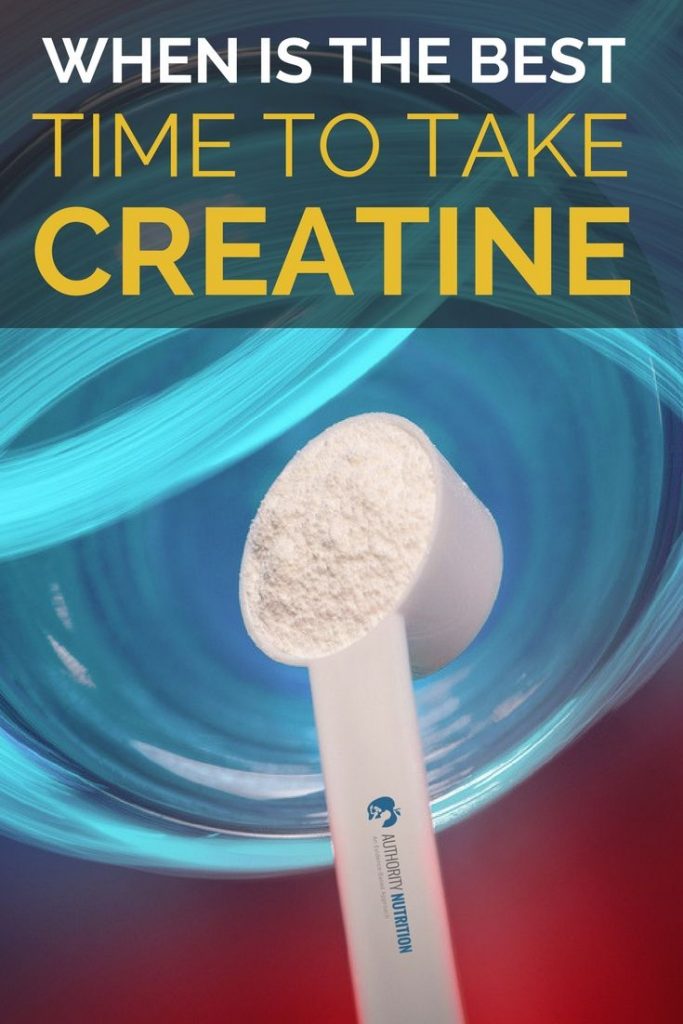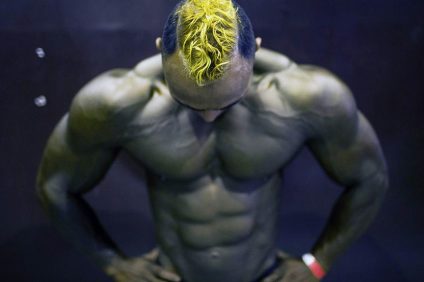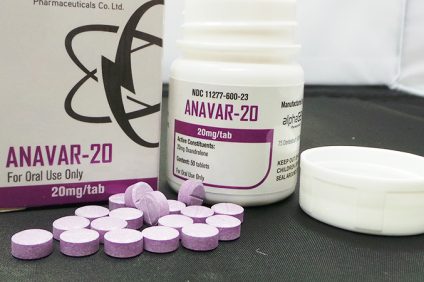Muscle gain creatine: benefits and tips for use
Creatine is one of the most popular types of sports nutrition. This is a biological product of natural origin. Athletes take creatine to gain muscle mass, improve metabolic processes in the body, as well as increase strength and endurance. Creatine is an important element in the formation of energy necessary for muscle contraction.
The human body produces a small amount of creatine, and also receives this substance from certain foods. However, with regular intensive training, its lack begins to be felt. Therefore, people leading an active lifestyle, take this substance in the form of a special sports supplement. This type of sports food is highly regarded by athletes.

Features of creatine
Creatine has a unique composition and properties. How does creatine work?
Once in the body, creatine promotes intense saturation of muscle fibers, after which the substance begins to transform into creatine phosphate. This modification of the substance promotes the formation of ATP in the body of an athlete – an adenosine triphosphoric amino acid that stores energy. Fats, proteins, and carbohydrates are processed into ATP molecules, thereby releasing energy.
ATP reserves during intensive training are not enough for a short time. When they are depleted, creatine comes to the rescue. It contributes to the synthesis of new ATP molecules and their accumulation, thereby increasing muscle power and strength, and the athlete can lift large weights and do more approaches. Therefore, taking creatine as a sports supplement to the diet will help to achieve the desired result twice as fast. And with a deficiency of substances in the body, the athlete quickly weakens and exhales.
In addition, creatine helps to neutralize acids that are synthesized in the body during training, thereby reducing their fatigue. Also, this substance stimulates the flow of fluid to the muscles, due to which they become more voluminous and form an attractive body relief.
Like any other type of sports nutrition, creatine is available in several forms. We list the most popular forms of release among athletes:
- Creatine Monohydrate. It is used to increase stamina and strength. It is also ideal creatine for weight gain. The supplement consists of creatine and microparticles of water. Exists in the form of powder, tablets, and capsules.
- Krekalin. Instead of microparticles of water in the alkali. According to experts, this helps to enhance the action of creatine by neutralizing the acidic environment of the stomach.
- Creatine Malate. In addition to creatine, monohydrate contains malic acid. It is well dissolved in water. Improves endurance.
- Creatine Pyruvate. This is a type of creatine that contains pyruvic acid. It does not require loading and is absorbed almost to the end. Pyruvate is the most effective form of creatine to date.
- Creatine-Glutamine-Taurine. An effective combination of three active substances: glutamine promotes the accumulation of creatine and accelerates the synthesis process, and taurine allows you to increase strength and endurance.
- Creatine Nitrate. In this type of sports meal, creatine particles are combined with organic nitrate (nitric oxide). Creatine nitrate is used to gain body weight and increase strength. Nitrate dilates blood vessels, which contributes to faster absorption of creatine.
The most popular among athletes is creatine monohydrate – it is considered the best drug for gaining muscle mass. In addition, it is the most affordable.
Pros and Cons of Creatine
Since this is a completely natural substance, it has no particular contraindications. The average daily rate is 3 grams – it’s not worth it to be diligent with the reception, exceeding the recommended dosage. This puts you at risk for your own health.
Excessive use of creatine can cause the following side effects:
- the decrease in bone density;
- acne development;
- increased risk of renal failure;
- digestion problems;
- water retention in the body.
It is important to note that the above side effects are quite rare and are not observed at all. It is worthwhile to carefully monitor your body and notice changes in well-being.
In addition to possible contraindications, on the Internet, you can find not entirely truthful information about creatine. For example, among such myths, the following are common: the creation of an increased load on the heart, an increased risk of developing cancer, an increase in blood pressure, and a negative effect on potency.
Once again, we note that the last list is among the absolute myths. There is no scientific evidence to support such a negative effect on the body.
There are undoubted advantages of using creatine. Of these, we can distinguish:
- improving muscle endurance, reducing fatigue even with prolonged training;
- increase in muscle strength;
- strengthening the effectiveness of training;
- thickening of muscle fibers, which contributes to muscle building;
- providing nutrients to the cells, which improves the regeneration of muscle tissue.
Discover the 2 best times to take creatine on non-workout days to increase your strength instantly. More secrets of time for bodybuilders to gain size and strength.
What regimens for supplementation exist? When it is best to use it and in what dosage? With what can you mix creatine with?

The use of creatine in bodybuilding is beyond doubt. It is a reliable assistant in recruiting muscle mass, increasing endurance, increasing strength, and strengthening immunity. The additive is produced in various forms capsules, powder, or tablets. The most convenient of them are in two forms tablets and capsules. If we proceed from the position of digestibility, then it is better, of course, to take the powder.
There are two options of creatine usage: each has its own advantages and features.
When developing a program for taking creatine, it is important to consider the individual characteristics of the body. The average daily dosage of creatine is 5 grams per day. When choosing the first intake at the loading stage, you can take 5 grams 4 times a day.
The supplement should be taken by mixing it with other types of sports nutrition, or separately. It is important to take only freshly prepared creatine, and it is better to dissolve it in a warm liquid. Sweet juices such as grape are most suitable for this. In a mixture with them, creatine passes through the stomach faster and enters the small intestine, where it is absorbed.
Rules of Use
As a rule, most athletes do not know whether to take creatine before or after training, to take creatine on non-workout days, what dosage should be, whether to consume creatine at night, and so on. In general, there are many more questions than answers. But we will fix it with a balance ball. So, let’s look at the necessary nuances, swinging creatine and its reception:
What are the schemes? Here, many “fall asleep”, because there are two main approaches:
- In the first case, creatine is considered to be in the so-called loading phase, which is the saturation of the body. This is done as follows. In the first week, it is necessary to take on a daily basis, five grams of an additive four times a day. The total daily intake is 20 grams. The time of reception is between meals. If it is a question of days with training, then one portion should be taken immediately after leaving the room. Further – less. Starting from 6-7 days, reduce the dose to 2 grams. The frequency of reception should be 1 time per day. When to take? In the morning (if it’s a day of rest) or after classes (if there is a training session). The duration of the course should not exceed one month, after which a break-in several weeks is necessary (as a rule, 3-4 are enough).
- In the second case, no download is expected. It is believed that this option is better and safer for the body. Dosage is 5-6 grams daily. In the days of exercise, creatine must enter the stomach immediately after leaving the gym, and on rest days – before meals. The optimum time of reception – 60 days. After this, it is worth giving the body a small rest three or four weeks.
And in the first and second schemes, it is allowed to take creatine absorption along with other sports nutrition, for example, amino acids, protein, or carbohydrate-protein mixture (geynerom).
When to take? What is the best time to take creatine?

Another critical issue that many athletes cannot decide is the optimal time for taking the supplement and the best time to use creatine. In the network, there are opinions that it is better to use the supplement before classes in the gym. But this is not so. Studies have shown that this approach is the least effective. There are several reasons for this:
- Disturbed water exchange, which can lead to significant dehydration of the body. To admit this is entirely not desirable;
- Before training, the body is set up in such a way that the delivery of useful substances to muscle cells is inhibited. As a consequence, the intake of creatine may not bring the expected effect;
- The body expects the intake of slow carbohydrates before training. Rapid carbohydrates are quickly absorbed and can contribute to the increase in the fatty layer. Naturally, there is no need for this;
- Muscle fibers do not need creatine during exercise. They need it already after completion when there is an apparent deficit of energy.
By the way, it’s also useless to use an additive during classes, because this can only complicate the work and slow down the growth of muscle fibers.
Now we can answer the question when to drink creatine on non-workout days. The answer is, only after going to the gym and doing hyperextension. Moreover, it is desirable to do this within 40-60 minutes. As a rule, this time is most favorable for the assimilation of all the useful components of the body which includes complex amino acids, carbohydrates, protein, and others.
As for days of rest, then these days you can take the supplement at any time (also at night). During the loading period, the last portion is just recommended to be taken before going to bed. It is believed that taking such a useful component at night, allows you to better assimilate the supplement and prepare the body for a training day.
How to take creatine powder
Often there are situations when athletes decide to improve the effectiveness of their training, acquire the coveted supplement, but after a while, nothing happens. Working weights, muscle volumes, and even the duration of the workout do not increase. All this happens not because the supplement is ineffective, but only because it was not used as it should. To a greater extent, this applies to creatine powder.
On the one hand, creatine powder is an extremely effective supplement, which is 1-2 weeks will allow you to note significant changes. On the other hand, if taken incorrectly, it is hardly possible to extract at least half of the efficiency that should be. That is why, in order not to make such mistakes, you need to figure out how to drink keratin in powder correctly, which must be taken into account, and what is better not to allow.

How to use creatine correctly? The powder cannot be dissolved in a liquid, because the crystals will simply settle on the bottom. Therefore, athletes usually take the supplement in two ways, either put the whole spoonful of powder in their mouth and drink it with water, which is not very pleasant or simply mix it into a glass or shaker. In this case, it is very important to thoroughly crush the liquid immediately before intake, so that the powder does not remain at the bottom.
Also, do not forget that although the dosage is most often determined by eye, it is better to carefully measure the right amount of powder. This can be done using a kitchen scale. You need to take creatine after a workout. If you divide the daily dosage into two servings, then one intake should go after training, and the other before physical work, during the day, or even before bedtime.
Creatine dosage
Basically, the daily dosage depends on the regimen. For the loading phase, the daily dosage on loading days is 15-20 grams (divided into 4 doses); after the initial phase – 2-3 grams. For admission without a loading period, the dosage should be 4-5 grams per day. It is advisable to divide them into two methods, which, according to some reports, can increase overall efficiency.
It is worth considering that creatine can not be taken continuously, since the body will reduce the production of its own substance, which is fraught with consequences. Therefore, the supplement is used in courses.
Taking creatine on non-workout days
Since creatine is absorbed as much as possible in the presence of insulin, it is best to take it with food, especially with carbohydrates or with energy drinks. The action of creatine on the muscles is cumulative in nature, so its strict intake time is not too important. Some athletes add it to a restorative cocktail after training. Since large doses of creatine can cause indigestion, with such symptoms should reduce its dosage.
With what to take?
So, with the questions “when?” and “how?” figured out, now you can consider the subtleties of combining. Here everything is simple. To improve the absorption of the supplement and speed up the secretion of insulin, it is advisable to drink creatine on non-workout days together:
- with fast carbohydrates (you can drink the additive with sweet juice or water with sugar);
- with fast protein (helps improve digestion);
- with amino acids.
Creatine monohydrate is the most important sports supplement to increase strength, increase body weight, and muscle volume. To achieve a positive effect, a constant daily intake of 2-4 g of creatine is recommended, preferably after strength training and as part of a carbohydrate-protein shake (although creatine can be taken at other times). Now you do not just own information about the benefits of creatine on non-workout days, but also know how and when to take it. It remains only to apply their knowledge in practice. Good luck





